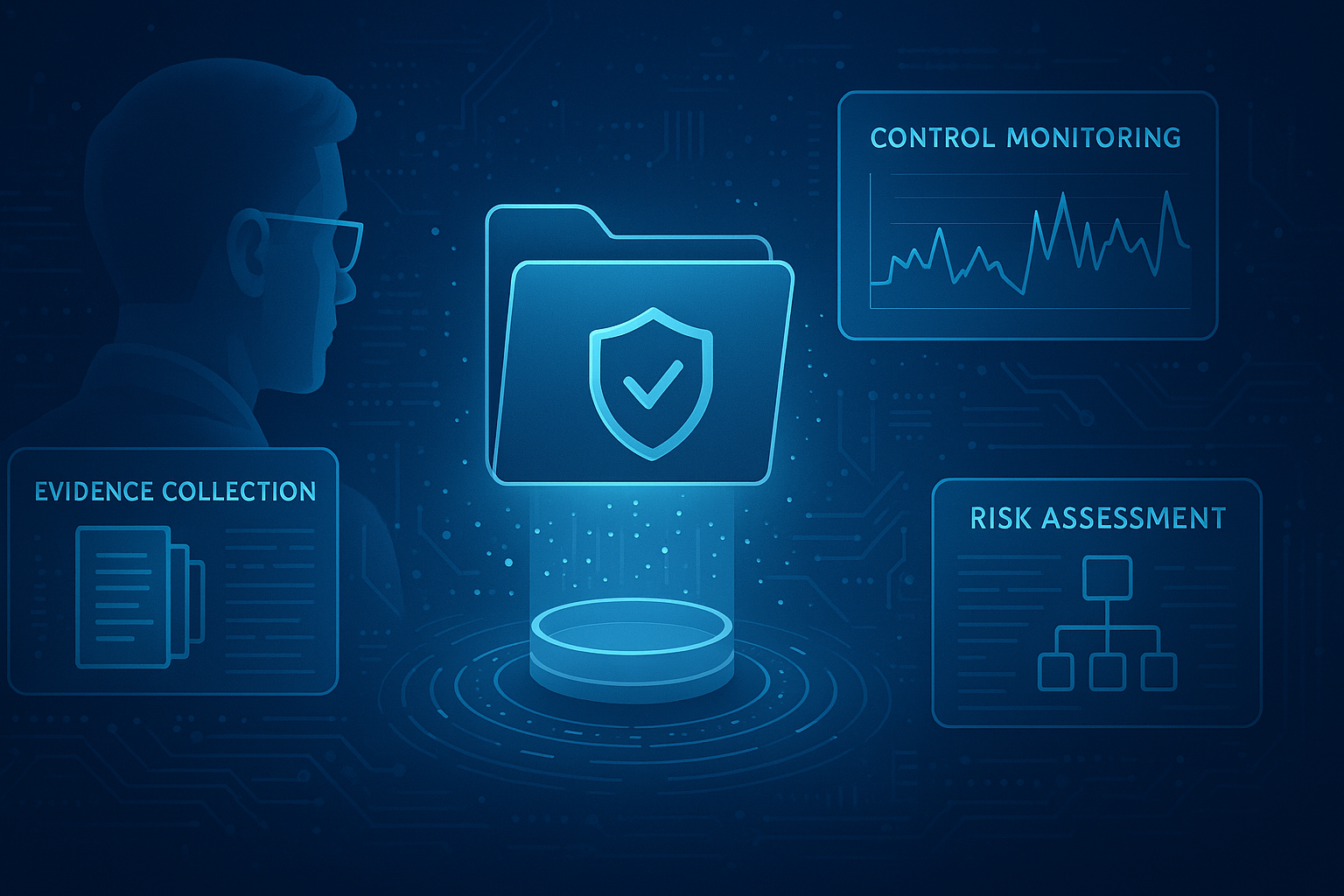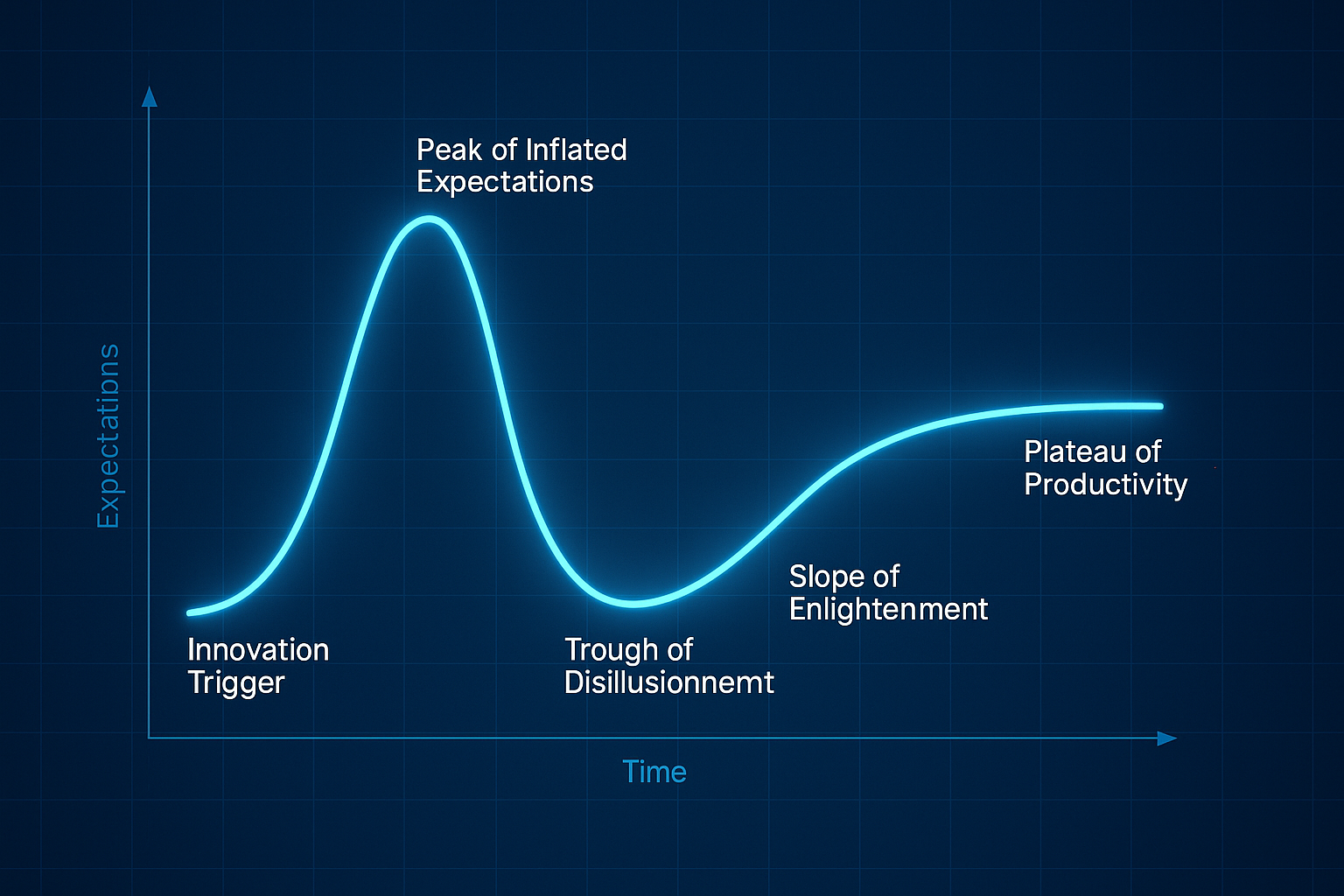Effective cybersecurity reporting is more important than ever for CISOs, CIOs, and other security leaders in today's complex threat landscape. Reporting isn’t just about sharing data; it’s about translating technical realities into business-relevant insights that inform strategic decisions. Yes, the SEC Cybersecurity Reporting Rule and NIST CSF 2.0 codify leadership collaboration and reporting into security operations, but Board reporting is more than just a tick on a checklist.
Cybersecurity Board reporting can transform security operations from a technical necessity to a core business enabler. This blog explores the cycle of cyber risk management, why reporting is integral to its success, and how to contextualize cyber risk in financial terms to engage board members and executives using CyberStrong.
The Cyber Risk Management Cycle and the Role of Cybersecurity Board Reporting
Cyber risk management is a continuous process, typically consisting of the following stages:
- Risk Identification: Recognizing potential threats and vulnerabilities.
- Risk Assessment: Evaluating the likelihood and potential impact of these risks.
- Risk Mitigation: Implementing measures to reduce or eliminate identified risks.
- Risk Monitoring: Continuously observing the risk environment and control effectiveness.
- Risk Communication: Sharing insights and recommendations with stakeholders.
You can use CyberStrong to support each facet of the cyber risk management cycle with real-time data and easy-to-understand dashboards and visualizations to enhance your board report. The CISO Board report is the thread that ties this cycle together. It transforms raw data into actionable insights, fosters accountability across teams, and ensures that cybersecurity remains aligned with organizational objectives.
Nailing your board report is critical for conveying insights around each cyber risk management cycle step. Your board report should highlight emerging threats or trends and include heat maps or quantified metrics to showcase the organization’s risk landscape. From there, your report should consist of updates on cyber maturity progress and insights on how to prioritize resources and for which risks. Additionally, your Board needs to know what is going on in the industry - you should include threat trends in your industry and how you compare to your peers.
Check out our cybersecurity board report template , which will prepare you to facilitate actionable conversations about cybersecurity with executive leadership.
Contextualizing Cyber Risk in Business and Financial Terms
For executives and board members, the value of cybersecurity lies in how it protects business operations, finances, and reputation. Therefore, CISOs must bridge the gap between technical cybersecurity metrics and business language. Boards care about outcomes: how cyber risks impact the bottom line, regulatory compliance, or operational continuity. The SEC Cybersecurity Rules codify this as a regulatory requirement. The Board and executive leadership must know the impact of cyber risks on the organization, and similarly, adding the “Govern” function to NIST CSF 2.0 aimed to do the same.
With increasing threats and stricter regulations, CISOs and cybersecurity leaders must find ways to communicate cyber risk to secure resources and alignment effectively. Discussing cyber risks in isolation—without tying them to financial or strategic consequences—can lead to disengagement or misaligned priorities. Your board needs to know what is at stake in clear terms.
Use cyber risk analysis models like FAIR and NIST 800-30 to determine your most relevant cyber risks and assign them a dollar value. Translating cyber risk into dollars and cents is the most communicable language for non-technical leaders.
NIST 800-30 is a comprehensive qualitative cybersecurity risk assessment model for evaluating an organization’s cybersecurity risks per the NIST 800-30 risk management framework. Based on the results, teams can develop and implement mitigation strategies and regularly monitor these insights to ensure the security posture is effectively managed over time. You can use the NIST 800-30 risk assessment methodology to determine the most relevant threats to your organization, the likelihood of these threats, and how these threats will affect your organization.
FAIR, or Factor Analysis of Information Risk, is a cyber risk quantification model that monetizes risk exposure by breaking down the risk by its loss magnitude and loss event frequency and analyzing how these two aspects interact. The FAIR risk assessment methodology is especially valuable for mature organizations looking to improve communication with business-side leaders and the Board.
Addressing The Board’s Top Cybersecurity Concerns
Once you’ve run your cyber risk assessments using these models, you must decide on your top cyber risks based on their potential financial impact and relevance to your industry and organization.
You must be prepared to answer these questions related to your selected top risks.
What are the company’s most critical cyber risks?
Using your FAIR or NIST 800-30 risk assessment data, discuss your top cyber risks, the potential financial impact, and how likely an event will occur.
Provide plans of action for mitigating your top risks and the resources needed.
How are the company’s top cyber risks managed and mitigated?
Provide a summary of the actions taken to manage and mitigate your top cyber risks.
Use the Risk Remediation Dashboard to address the RoSI of planned initiatives, annualized risk reduction, average loss expectancy, and projected cost.
Recommended Reading: What is risk remediation in cybersecurity risk management?
How do we know if the company is breached? What is the company’s breach detection process?
Provide a summary of the protocol in place for breach detection. If there are gaps in the breach detection process, convey why it’s necessary to address them, what needs to be done, and the cost of leaving this gap unaddressed.
What is the company’s incident response plan?
Provide a summary of an attack scenario and what can be compromised if an incident occurs.
Walk the Board through the incident response plan and discuss what will be done to contain and recover the threat. You should also include details on who owns each response step and the compromised tool or asset.
How does the company compare to industry peers?
Using CyberStrong’s free cyber risk analysis tool, you can benchmark your organization against vertical and similarly sized organizations. Provide a summary of these findings to your Board.
If your company is not comparing well, discuss areas of improvement and what can be done to reduce or mitigate the top risks.
To round out your report for cybersecurity metrics, you should include summaries on the latest threat trends and new cybersecurity regulatory developments.
Provide Cyber Insights that Matter to the Board
The Board is meant to carry out its fiduciary responsibilities and oversee the organization. A Board report is not meant to detail cybersecurity management's nitty-gritty technical details. It’s one of your few chances to communicate the value of security to leadership. Don’t miss your chance to convey the importance of cybersecurity investment and priority alignment. Waiting to talk about a critical risk could make or break the organization.
That’s why real-time data and quantified insights are key to your cyber risk board report and can be achieved with CyberStrong. Remember to focus on outcomes, such as the financial impact of mitigated risks or strategic opportunities enabled by improved cybersecurity.
Reporting is not just a task for CISOs and CIOs—it’s a strategic function that enables informed decision-making, fosters accountability, and aligns cybersecurity with business objectives. Security leaders can drive meaningful engagement with boards and executives by integrating reporting into the cyber risk management cycle, contextualizing risks in financial terms, and tailoring communication to specific audiences.
Ready to elevate your reporting practices? Explore the CyberStrong platform as your key cybersecurity reporting tool to streamline data collection, contextualize metrics, and deliver insights that resonate across your organization.
FAQ: Top Cybersecurity Metrics for the Board
What are the top cybersecurity metrics the Board cares about?
The Board is most interested in business-relevant, outcome-driven metrics. Top cybersecurity metrics for the board typically include:
-
Top risks by financial impact (via FAIR or NIST 800-30)
-
Annualized loss expectancy (ALE)
-
Return on Security Investment (RoSI)
-
Mean Time to Detect (MTTD) and Mean Time to Respond (MTTR)
-
Risk remediation progress (e.g., % of top risks mitigated)
-
Benchmarking vs. industry peers
-
Cyber maturity score or improvement over time
These metrics help the Board understand how cybersecurity is reducing risk and supporting business continuity.
Why is it important to translate cybersecurity metrics into financial terms?
Board members think in terms of business risk, revenue protection, and compliance, not technical controls. Translating cyber risk into financial impact allows CISOs to communicate what’s at stake, prioritize funding, and justify investments in risk mitigation.
What frameworks help quantify and contextualize cyber risk for the Board?
The two most widely used frameworks are:
-
FAIR (Factor Analysis of Information Risk): Breaks down cyber risk into loss frequency and magnitude to produce a monetary value of risk.
-
NIST 800-30: A comprehensive risk assessment methodology that helps prioritize threats based on likelihood and impact.
These models provide defensible, structured ways to convert technical risk into board-ready financial language.
What should a cybersecurity board report include?
A well-rounded cybersecurity board report template should include:
-
A list of top risks, their financial impact, and mitigation plans
-
RoSI and metrics showing progress over time
-
Benchmarking data against industry peers
-
Key threat trends and regulatory updates
-
Incident detection and response readiness summaries
-
A visual dashboard or heatmap to simplify risk communication
Use tools like CyberStrong to automate, quantify, and visualize this data in an executive-friendly format.
How do I show cybersecurity’s value to the organization in a board setting?
Focus on outcomes rather than activity. Show how cybersecurity:
-
Prevented or minimized financial loss
-
Reduced operational downtime
-
Protected brand and customer trust
-
Enabled compliance with regulatory requirements
-
Supported business growth by managing third-party or digital transformation risk
How often should cybersecurity metrics be reported to the board?
Cybersecurity metrics should be reported quarterly at a minimum, with ad hoc updates as needed for significant events (e.g., new threats, breaches, or regulatory changes). Consistency builds trust and helps the Board see security as a strategic, ongoing effort, not just a crisis response.
How can CyberStrong help improve cybersecurity board reporting?
CyberStrong enables CISOs to:
-
Use automate risk assessment tools for FAIR and NIST 800-30 risk assessments
-
Generate real-time, board-ready dashboards and heatmaps
-
Calculate RoSI and ALE
-
Benchmark risk posture against similar organizations
-
Tie security initiatives to business impact
This makes it easier to tell a compelling, metrics-driven story that gets leadership buy-in.





.png)
.png)
.png)
%201.png)
.png)






